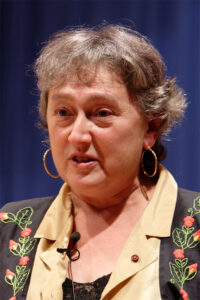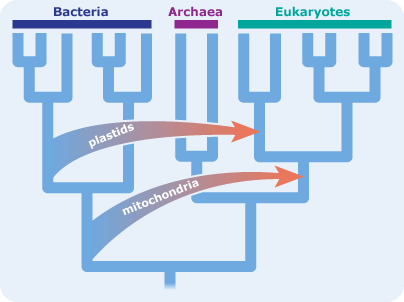An extraordinary claim with extraordinary evidence
by the Understanding Science team
Did you know there are more bacteria living in your intestines than there are cells in your entire body? That might be a disturbing thought, but without gut microbes you would have trouble digesting many grains, fruits, and vegetables — and you’d have more allergies and a weaker immune system, not to mention the infections you might get from harmful bacteria if real estate in your intestines weren’t already occupied by friendly species.

Biologists now think you have an even closer — and more ancient — relationship with bacteria than you might think. They not only live on and in you, but you actually carry the descendents of ancient bacteria inside every cell in your body. You aren’t just a house for bacteria; in a very real sense, you are bacteria.
How did scientists come to accept this surprising idea? In the 1960s, a young microbiologist named Lynn Margulis revived an old hypothesis. Based on a fresh look at evidence from the fields of cell biology, biochemistry, and paleontology, she proposed that several fundamental transitions in evolution occurred, not through competition and speciation, but through cooperation, when distinct cell lineages joined together to become a single organism. To her colleagues, the idea seemed crazy — like suggesting that aliens built the pyramids — but Margulis defended her work despite this initial resistance. She inspired scientists in far flung fields of biology to test her hypothesis in the lab. As the evidence piled up in the decades following her first paper, even some of her strongest critics had to concede that she’d been right.

You may have already learned about some of her ideas as “facts” in your biology textbook, but you probably haven’t heard about how controversial they were when they were first proposed. Let’s take a closer look at this story of an extraordinary claim — and the extraordinary evidence that supports it.
This case study highlights these aspects of the nature of science:
- Science can test hypotheses about events that happened long ago.
- Scientific ideas are tested with multiple lines of evidence.
- Science is a community endeavor that benefits from a diverse and broad range of perspectives, practices, and technologies.
- Scientific ideas evolve with new evidence; however, well supported scientific ideas are not tenuous.
- Through a system of checks and balances, the process of science can overcome individual biases.
- Evidence is the most important arbiter of which scientific ideas are accepted.
Throughout this story, we’ll emphasize the evaluation of scientific evidence. To read more about it, visit The core of science: Relating evidence and ideas.
